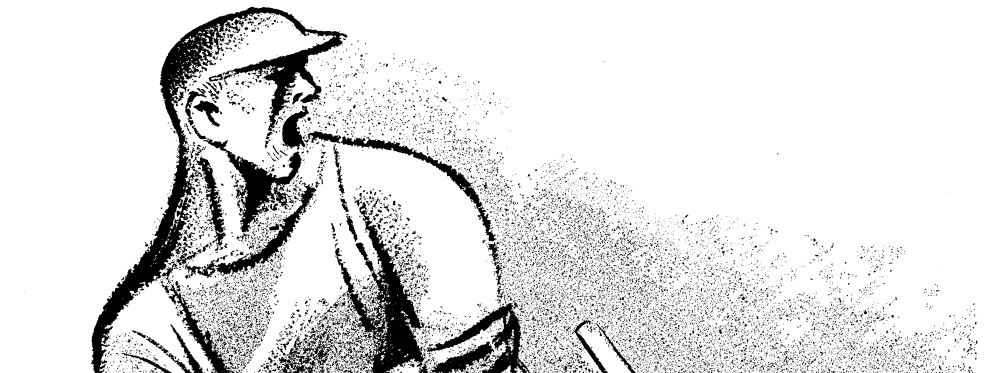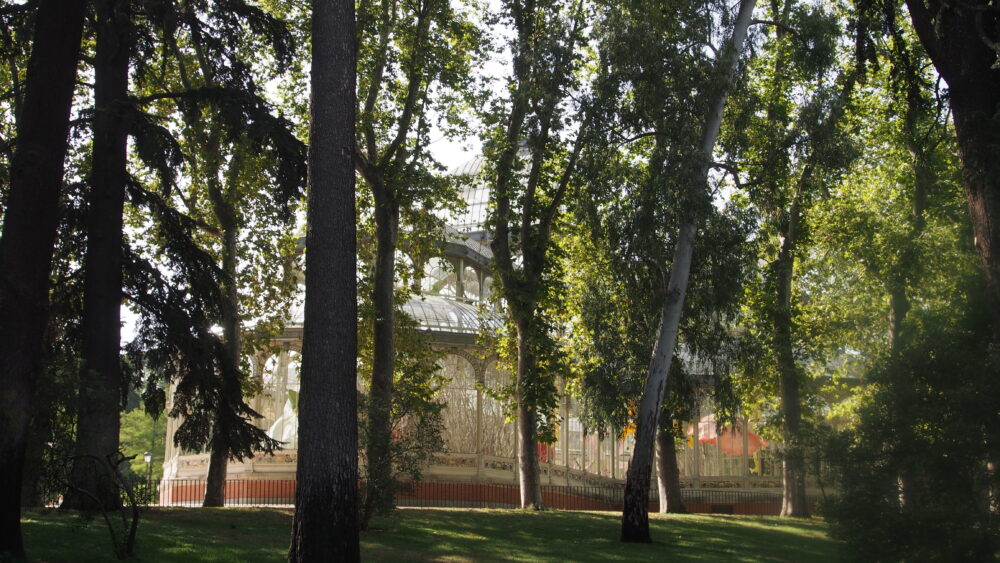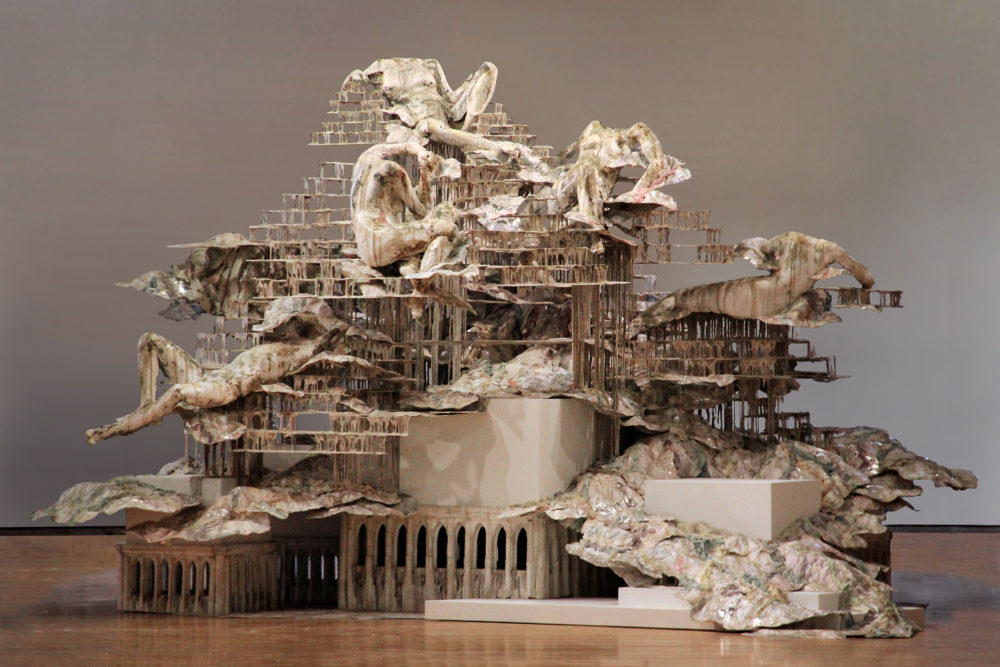The history of all hitherto existing society may well have been the history of class struggle, but this struggle has been pitched against a background… Continue Reading On Labor Day Hurricanes
Posts published in “Architecture & Urbanism”
In "to a raven and the hurricanes which bring back smells of humans in love from unknown places," Petrit Halilaj’s vivid celebration of transcendent queer love takes on new resonance in the context of the global pandemic. Continue Reading On wingless birds and permeable cages: Petrit Halilaj at the Palacio de Cristal, Madrid
Pictured on street corners and plastered throughout the metro system, an eye-catching image announcing the Fondation Louis Vuitton’s current exhibition Charlotte Perriand: Inventing a New World… Continue Reading Charlotte Perriand: Pioneering Design in a Man’s World
Addressing themes not often united in contemporary art exhibitions, the Bronx Museum of the Art’s stellar presentation of Diana Al-Hadid: Delirious Matter (July 18—October 14,… Continue Reading Fleeting Structures: Diana Al-Hadid at the Bronx Museum

On February 29, 2012, Professor Jean-Louis Cohen gave a public talk on his new book, Architecture in Uniform: Designing and Building for WWII, at the Mid-Manhattan branch of the New York Public Library.
Cohen began research for Architecture in Uniform—a project that would be some fifteen years in the making—as a way to pay some long overdue attention to architectural production during World War II. In the existing scholarship, most of the focus is placed on the avant-garde 1920s, groundbreaking interwar building, and post-WWII reconstruction. The years 1937 to 1945–during which time the preparation, mobilization, destruction, and reconstruction associated with WWII took place–are noticeably absent from many survey texts of modern architectural history. Cohen’s aim was to investigate and ultimately to close this curious gap in the scholarship, which the author indubitably does.

The Modernist[1] design aesthetic is so tightly woven into our Ikea-furnished everyday lives that it is rather easy to forget its origins as an attempted movement toward a Utopian fantasy of the built environment. In visual contrast to many proto-Modern design practices, the Corbusian aesthetics that emerged in the early twentieth century exhibited an at times brutally rigid geometric quality. A stylistically modern organization of space seemed to respond to the contemporaneous disarray of the wartime human condition by making a silent demand for a more controlled way of life. Indeed, as modern architect Berthold Lubetkin stated, “The philosophical aim and orderly character of [Modernist] designs are diametrically opposed to the intellectual climate in which we live . . . my personal interpretation is that these buildings cry out for a world that has never come into being.”[2] In other words, modern architecture seems to have been the defense mechanism of a zeitgeist. It tried—as some would argue, in vain–to represent an environmental solution to a problem that was actually unsolvable.




